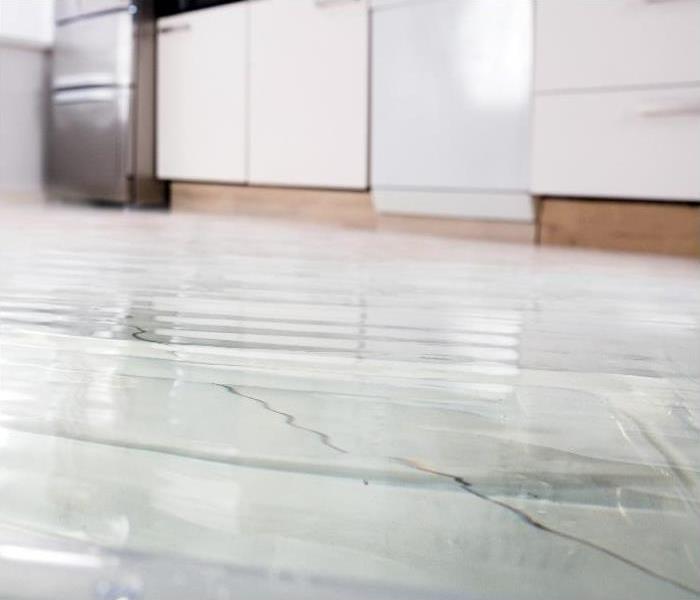How Does Water Cleanup Affect Indoor Air Quality in Mary Esther?
6/19/2020 (Permalink)
SERVPRO Understands How Different Factors Influence Air Quality and Addresses Them during Water Cleanup in Mary Esther
Cleaning up a house after a water spill takes more than extracting pools of water. Failure to take other preventive and restorative steps can lead to several problems, including the development of indoor air quality problems. When our SERVPRO crews respond to water loss incidents in Mary Esther, we perform thorough cleanup to eliminate or prevent any problems.
How does a water spill lead to problems with air quality?
When performing water cleanup in Mary Esther properties, our SERVPRO technicians are aware that the presence of moisture or the processes used to clean dirty areas within the property can end up causing air quality problems. Some factors that influence indoor air quality include:
• Humidity
• Temperature
• Noxious chemicals
• Microbial development
Although you might not notice higher humidity, you might experience eye irritation, nasal stuffiness, or other discomforts. Evaporation of spilled water increases the humidity levels in the house. Even after extracting all standing water, any wet materials in the house still contribute to higher humidity levels. Drying all materials and surfaces is, therefore, crucial during cleanup of water damaged properties.
Sometimes the wetness may be out of sight, hidden in wall cavities or even subfloors creating an unexplainable humidity problem. Our technicians rely on advanced equipment to diagnose such problems. For instance, a thermo-hygrometer helps identify rooms with higher humidity levels, thus helping narrow down the likelihood of hidden moisture in the area. We also use thermal cameras to help pinpoint the wet sections behind concealment. After identifying the wet areas, we perform controlled demolition to reach the hidden moisture and clean up the area.
Can restoration of a clean water loss involve noxious chemicals?
Clean water leaks are easier to clean up since they do not contaminate materials or contents in the house. In theory, extraction and drying are the only actions necessary. However, from the previous experiences we have had resolving such water spills, indirect soiling still occurs. Running dyes, rust, and microbial growth can happen, leading to deep soiling of fabrics, upholstery or carpets.
Cleaning such soiling necessitates several processes, including agitation of the surfaces and the use of chemicals, which help dissolve, suspend, or loosen the soils. Mixing different types of chemicals, especially when a particular soil proves challenging to remove, can lead to noxious fumes. Another problem is the inadequate rinsing of the cleaned areas, thus leaving traces of the chemicals embedded within the materials. Such traces can result in the development of bad odor in the house. Our SERVPRO technicians take precautions not to mix some substances known to react with each other, including:
• Vinegar and bleach
• Ammonia and bleach
• Hydrogen peroxide and vinegar
In case there is a need to mix two products that react chemically producing fumes, our technicians wear respirators for protection against inhaling the dangerous gases. After cleaning contents such as carpets or upholstery, we ensure to rinse them thoroughly before drying them. We also ventilate the cleaned areas to remove any odor remnants in the air.
Can I control microbial growth during the cleaning process?
Microbial growth is the process that leads to mold infestation in properties. It can also turn a clean water loss to a greywater loss. Unlike other problems such as soling or staining, microbial growth is a natural process, so most of the factors that support it are already in place before the water spill. Controlling microbial growth is possible through:
• Expedited water removal
• Applying antimicrobial agents
• Immediate removal of mold residues
If you notice the water spill in good time, it is possible to prevent mold development by expediting water removal and drying the premises. Mold starts developing within 24-48 hours after the water loss incident. When you call our SERVPRO technicians to your premises, we try to expedite removal by using several units of equipment such as extractors, air movers and dehumidifiers eliminating the moisture problem, “Like it never even happened.”
Since it might not be feasible to dry all wet materials within a few hours, the risk of mold development from residue moisture persists. Applying antimicrobial products in the areas we clean helps stop or delay such growth, ensuring that we complete drying before any problems develop.
Addressing the different factors that contribute to the state of the indoor air quality at your house eliminates chances of severe problems developing later on. When problems develop fully, they necessitate full deodorization and ventilation, among other processes, to restore standard indoor air quality in the house.
SERVPRO of Fort Walton Beach can help you manage all aspects of water loss. Call us any time at (850) 863-2552 to help. We’re Faster to Any Size Disaster.






 24/7 Emergency Service
24/7 Emergency Service
